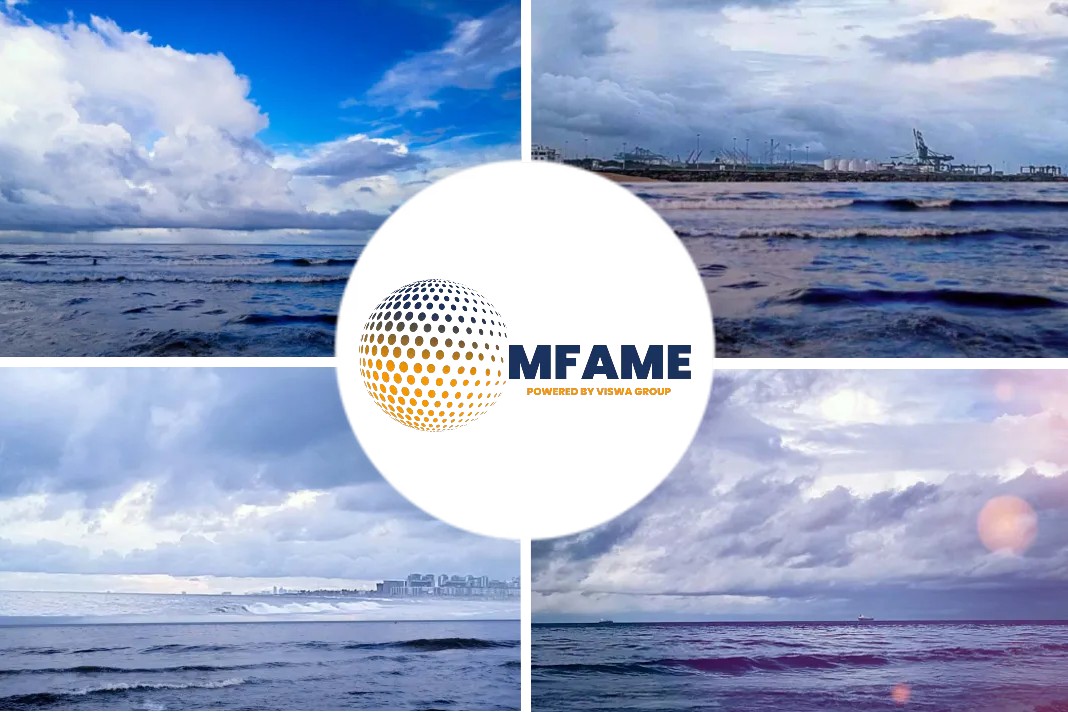- Safetytech Accelerator webinar highlights areas where digital technologies could deliver significant improvements to safety and risk management.
- Key areas highlighted were container ship fires, cargo screening, navigational safety and elimination of hazardous activities onboard ships.
- Security of containers in terms of ‘freight crime’ – either theft or infiltration of alien goods such as drugs – is also an ongoing problem.
Recent Safetytech Accelerator webinar highlights areas where digital technologies could deliver significant improvements to safety and risk management in maritime supply chains, says an article published on lr website.
Webinar hosted by Safetytech Accelerator
Experts drawn from across different sectors of the maritime and technology industries were each asked at a webinar hosted by Safetytech Accelerator last week to propose three of the most important areas where innovative technology could make an immediate difference in improving safety and risk management.
Key areas highlighted were container ship fires, cargo screening, navigational safety and elimination of hazardous activities onboard ships.
The industry is faced with plenty of problems that are very hard to resolve and require regulatory change, said Safetytech MD Maurizio Pilu in his introduction, “but the accent here is on where we can make a difference right now.”
The event coincided with the launch of Waypoint 3, the latest assistance programme for start-ups run by Safetytech Accelerator. Set up by Lloyd’s Register and Lloyd’s Register Foundation, the non-profit body’s aim is to promote the use of digital technologies to deliver significant improvements to safety and risk management in critical industries and supply chains.
Container ship fires
Fires aboard container ships continue to be a major problem, occurring “pretty much on a weekly basis”, he said, and these are largely a result of misdeclaration or non-declaration of hazardous cargoes.
Container lines have been addressing the problem for some two decades, harnessing advances in Machine Learning and Artificial Intelligence; but what is needed now, he argued, is integration of the different DG (Dangerous Goods) and HAZ (Hazardous Materials) rules, employing digital technologies to “map across the different codings” in use by the trade.
Securing & Security of containers
Securing issues are the root cause of many cases of container loss overboard or stow collapse – which in turn can lead to fires – he continued. Surely digital technologies could be used to monitor the tension of lashings, as well as to tell if cargo is stored correctly inside ‘smart’ containers, he asked.
Security of containers in terms of ‘freight crime’ – either theft or infiltration of alien goods such as drugs – is also an ongoing problem, he concluded, where X-ray scanning and gas monitoring could be used to “understand what’s going on inside”.
Roopesh Das, SVP of Digital Acceleration for Wallenius Wilhelmsen, agreed that vessel fire safety was an area ripe for improvement, especially given his company’s involvement in shipping cars where the risks are becoming more complex given developments like electric and hybrid cars containing batteries. Innovative technologies should be used for the “early detection, monitoring and quick extinction” of fires, he recommended.
Likewise he again felt better cargo screening was needed, citing the example of stink bugs where detection of a single insect in a cargo arriving in Australia could lead to the ship being denied entry.
Digital innovation improve safety
He also introduced ‘People’ as an area suitable for digital innovation in the form of enhanced recruitment and training of ship and port personnel, using tools like Virtual Reality and Augmented Reality, as well as improved quality of life onboard to aid seafarer retention.
Richard Holdsworth, Director of Innovation & Sustainability and ex Maritime Ventures Lead at Shell, pinpointed his three areas ripe for improvement by technology as navigational safety as regards the avoidance of collisions, especially in crowded waterways – likely to become key consideration with the advent of autonomous ships; reduction or elimination of hazardous activities aboard ship, such as entering confined spaces, which could be automated; and identification of non-compliant vessels and entry into geographical areas of risk via analytics of past behaviour and dark activities such as ships switching off their AIS (automatic identification system).
Ran Merkazy, VP Product and Services Innovation at Lloyd’s Register, agreed with Holdsworth that digital innovation should be used to improve safety in the near-shore vicinity – where he pointed out some 60% of accidents occurred and digital connectivity was better.
Misdeclaration of goods, A good area for a tech start-up
He also returned to the earlier issue of misdeclaration of goods, raising the added risk posed by the fragmentation of the supply chain where cargoes are stored in many varied locations.
Merkazy’s third ‘ask’ concerned insurance, where he said some as much as 80% to 90% of cargoes were either “uninsured or underinsured”- again more difficult to detect because of the fragmented nature of the supply chain. This could be a good area for a tech start-up to look into, he suggested.
The webinar ended with a case study by the Chief Commercial Officer of Scoutbase, Bosiljka Kozomara, on how the Waypoint programme of Safetytech and input from LR experts had helped his start-up company develop and launch its Human Factor Management programme.
Did you subscribe to our daily newsletter?
It’s Free! Click here to Subscribe!
Source: Ir.org
















